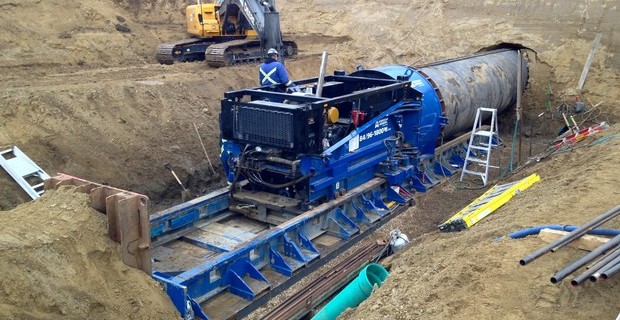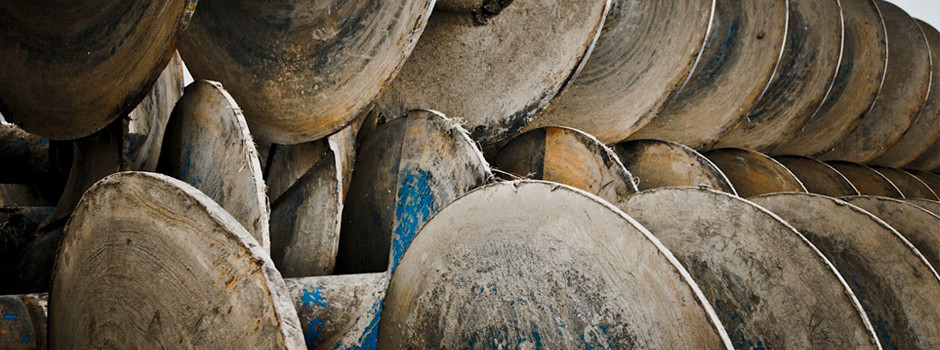
METHOD DESCRIPTION
Horizontal case boring is a trenchless technique that uses an auger boring machine sitting in a track system to drill horizontal boreholes by rotating a cutting head attached to an auger, while at the same time jacking steel casing through the ground. The auger boring machine generates torque that is transmitted to the cutting head through augers, which stay inside the casing. Simultaneously the boring machine is pushed forward using hydraulic jacking force. Spoil is removed from the borehole to the end of the casing by the rotation of the helical-wound auger flights. The vertical alignment of the auger boring operation can be monitored and measured using a water level and controlled using a steering head. Horizontal alignment is based on the initial setup of the track system in the launch pit, which is placed to the same line and grade as designed. This setup is critical to the accuracy of the auger boring process.
Neptune Coring has been using case boring for over 30 years as an economical casing installation method that can be used in a variety of ground conditions to eliminate open cutting and minimize ground disturbance.
TYPICAL AREAS OF INSTALLATIONS: Roadway & Railway Crossings, Pipeline Right-of-Ways, Buried Utilities, Airport Runways
MAIN APPLICATIONS: Storm Culverts, Steel Sleeves into which utilities can be installed
SOIL CONDITIONS: Varies
DIAMETER RANGE: Ranges from 300mm (12”) – 2125mm (84”).
DRIVE LENGTH: 12m (40’) – 150m (492’)
ACCURACY: Installation can be achieved to a specific line of +/- 600mm, and grade +/- 50mm of design.
TRENCHLESS TECHNOLOGY SYNERGY: Used in tandem with the guided boring (GB) will result in superior alignment accuracy.
